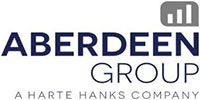Best Practices For Closing the Loop on Multi-National Transportation Procure-To-Pay

Today’s Chief Supply Chain Officer (CSCO) is beset by pressures on all fronts, not the least of which is who to address new B2B and B2C direct-to-consumer flows.
Aberdeen recently introduced a Prescriptive Model for Optimization that both defines and describes what leading companies are doing to reengineer inventory and fulfillment flows from source to end consumer.
This framework requires a move from current state descriptive analytics to analytical optimization that applies prescriptive and predictive intelligence during both planning and execution phases.
Aberdeen will be publishing a series of reports and interconnected blogs to help the office of the CSCO.
For each report, we will apply a Prescriptive Model of Optimization involving 3 major analytical modeling phases:
-
Descriptive, which uses business intelligence and data mining to ask: “What has happened?”
Predictive, which uses statistical models and forecasts to ask: “What could happen?”
Prescriptive, which uses optimization and embedded decision rules and simulation to ask: “What should we do?”
Each report will link back to the prior report in the series (see Strategic Sourcing report) and leave the reader with a keener understanding of the tradeoffs in cost and service available for each customer/product and segment of their end-to-end supply chain.
This blog is an overview of the second report in the series:
Best Practices for Closing the Loop on Multinational Transportation:
Procure-to-Pay
The Global nature of our supply chains today dictates a lot of collaboration that needs to go on in order to orchestrate supply-demand events. And when we think about orchestrating these events, there are many different interface points and complexities that crop up within the global supply chain.
Key Takeaways and Recommendations
Up to 85% of Chief Supply Chain Officers indicate that they have logistics operations that cross country borders. 63% of the Best-in-Class incorporate global trade functionality components in multinational shipments, but only 18% of Laggards have that capability. This represents a call to action.
Key Collaborative Optimization Capabilities of Top Performers
Optimization starts with procurement planning and selection. The Best-in-Class are anywhere from 1.5- to 3.5-times as likely as All Others to be able to optimize inbound to outbound modes and carriers (65%), import and export functionality (63%), and the planning of backhauls (56%) following delivery. Without collaborative optimization across carriers and transportation volumes, or without full consideration of trade compliance, it is likely that savings will be left behind during transportation.
Optimization ends with inbound to outbound continuous moves, pooling and consolidation. From origin to destination across planning and execution, the Best-in-Class are anywhere from 1.6- to 2.3-times as likely as All Others to be able to:
-
Automate pooling and hub-based routing (56%), multi-leg and multi-mode optimization (56%)
SKU and item-level visibility (52%)
- Multi-origin to multi-destination routing and consolidation (50%)
All of these capabilities require collaborative coordination across the extended supply chain. Not only does one have to coordinate across each node and mode in a global network, they must collaborate tightly with their suppliers and carriers to truly be successful during execution.
To Answer the Call, We provide a 5-phase strategy for closing the loop on procure-to-pay processes and spend that lends itself to predictive and prescriptive optimization.
-
Address globalization and cost strategically. Begin by automating either contract procurement or freight audit and payment collaboratively with partners.
Complete the spend management loop. There are two key areas here that are automation-centric:
-
Increase electronic payment automation
- Span planning/execution with automation
-
Realign around opportunities. Look at historical and consolidated spend to optimize through mode shifts and strategic consolidations.
Gain complete spend visibility end-to-end. Build full inbound and outbound total freight spend data by shipment, mode, and lane.
- Centralize planning and execution with unified spend management. Finally, tie planning and execution together in a more seamless, integrated, and synchronized fashion. This will complete the spend management loop, which allows one to look at historical spend, optimize, and fully take strategic advantage of the opportunities that are out there on a periodic, ongoing basis. Moving to a more prescriptive optimization strategy over time is the key.
Article Topics
Aberdeen Group News & Resources
Managing Risk in Your S&OP/Integrated Business Planning Process Migrating to Cloud Enterprise Resource Planning? Top Performers Know It’s Time to Migrate to Cloud Enterprise Resource Planning The Evolution of the Automotive Supply Chain Analyst Report: The Benefits of Cloud ERP New Global Trade Management: Connecting Upstream Decisions to Improve Downstream Execution Leveraging Global Trade Management (GTM) for Frictionless Ecommerce More Aberdeen GroupLatest in Supply Chain
TIm Cook Says Apple Plans to Increase Investments in Vietnam Amazon Logistics’ Growth Shakes Up Shipping Industry in 2023 Spotlight Startup: Cart.com is Reimagining Logistics Walmart and Swisslog Expand Partnership with New Texas Facility Nissan Channels Tesla With Its Latest Manufacturing Process Taking Stock of Today’s Robotics Market and What the Future Holds U.S. Manufacturing Gains Momentum After Another Strong Month More Supply Chain














